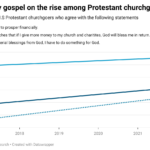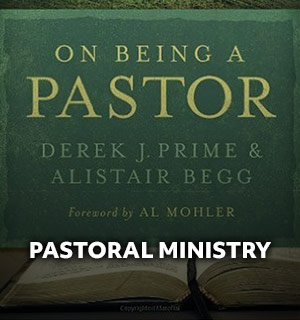
What helps a church break free of the overall trajectory of decline most U.S. congregations find themselves in—these nine factors.
By Aaron Earls
What helps a church break free of the overall trajectory of decline most U.S. congregations find themselves? According to the 2020 Faith Communities Today (FACT) study, the same factors that predicted growth and vitality two decades ago do the same today, but fewer churches are actually growing.
Twenty years ago, most churches (53%) were growing by at least 5%. The latest FACT study of more than 15,000 religious congregations in the U.S. found only around 1 in 3 (34%) grew weekly worship attendance at least 5% in the last five years. Most churches (52%) were in decline of at least 5%, while another 14% reported their attendance today is within 5%, plus or minus, of what it was five years ago.
READ MORE: Small Churches Continue Growing—but in Number, not Size
Similarly to worship attendance growth, only 33% of congregations strongly agree they are spiritually vital and alive. According to the FACT report, this congregational self-assessment question has demonstrated itself to be “a reliable indicator of health and strongly correlated with other attributes of thriving.”
20 years ago, most churches were growing by at least 5%. Today, only 1 in 3 (34%) grew weekly worship attendance at least 5% in the last five years, according to the FACT study. Click To TweetSo what do those churches look like that are both growing at a significant rate and spiritually thriving? The FACT report highlights nine congregational characteristics associated with flourishing and growth that have not changed dramatically across the 20 years of studies. Churches that are growing spiritually and numerically share these traits.
1. Strong leadership that fits well with the participants
Lifeway Research has found a lack of rest is one of the factors contributing to pastor burnout. The latest Lifeway Research study on pastor attrition finds few evangelical and Black Protestant pastors say their church has a plan for them to periodically receive a sabbatical (32%). Overall, according to the FACT study, only 23% of pastors say they’ve had a sabbatical in the past 10 years. Almost 1 in 3 (32%) say they are not able to regularly take just one day off each week from all their work. And this study was primarily conducted prior to the impact of COVID, which stretched many pastors even more.
Despite not having adequate rest, most congregations say the relationship between laity and leadership is at least good (25%), if not very good (68%). This positive relationship is needed for a growing, thriving church.
Only a third of churches (36%) say they been able to avoid disagreements and conflicts within the past five years, according to the FACT study. Click To TweetOnly a third of churches (36%), however, say they have avoided disagreements and conflicts within the past five years. For 28%, the conflict was not serious. In other cases, people left the church (35%), some withheld donations (13%), a pastor or staff member left (12%).
2. Clear and compelling mission
Many church leaders struggle with crafting and communicating a vision that inspires the congregation, but healthy churches are able to help their people grasp their goals.
While 84% of churches say they their congregation has a clear mission and purpose, only 39% strongly agree. This means 3 in 5 churches acknowledge they could improve is casting a vision and having churchgoers buy into their mission.
3. Vibrant, thought-provoking worship
How would attendees describe the worship service at your church? At growing, healthy congregations, churchgoers say the worship is relevant and meaningful. That does not necessarily mean “contemporary,” though that is often the case.
Most congregations say their worship is thought-provoking (77%) and reverent (64%), but fewer would describe their services as contemporary (31%) or innovative (24%).
4. Innovative and open to change
Healthy, growing churches aren’t only innovative in their worship, their seeking to do new things to meet new challenges facing their congregation. If COVID-19 taught churches nothing else, it’s that they should be ready to face anything and pivot plans when circumstances warrant.
Healthy, growing churches aren't only innovative in their worship, their seeking to do new things to meet new challenges facing their congregation. Click To TweetAfter a decade of decline, churches increasingly say they are willing to change to meet new challenges. In 2005, 74% of churches agreed. That subsequently fell to 68% in 2010 and 62% in 2015, before rebounding to 73% in 2020. However, only 23% strongly agree, so most churches can still improve on their flexibility.
5. Active in the local community
It should be no surprise that churches that are growing are those that include an external focus. Congregations who make themselves seen and known by their neighbors in a positive way are churches that draw in those same neighbors.
Lifeway Research found many Americans see churches as helpful but aren’t aware of all congregations do in their local communities. Growing, vibrant churches are integral parts of the surrounding neighborhood.
Congregations who make themselves seen and known by their neighbors in a positive way are churches that draw in those same neighbors. Click To TweetThe FACT study found 71% of churches say they are actively involved in their community, including 30% who strongly agree. Additionally, 85% say their church places at least some emphasis on community service activities, including 34% who say they place a lot of emphasis of it. In other words, almost all churches are doing this some, but most churches could do more.
6. Diverse community of participants
Faith Communities Today found that churches that have a diversity of participants across genders, age, ethnicity, socio-economic status are more likely to be healthy and growing. The FACT study found 62% of congregations say they are striving to be diverse in that way, but only 26% strongly agree.
Similarly, Lifeway Research found 93% of Protestant pastors say churches should strive to achieve racial diversity, but 81% of those pastors say their church is currently predominantly one ethnic group.
7. Attracting and involving new people
If a church is growing, by definition, they will have new people attending. If a church is growing and healthy, they’ll be good at involving those new people into the life of the congregation. Most churches believe they do both of those things well, but still see room for improvement.
Seven in 10 churches (70%) say they are actively looking for new members to be part of their congregation, including 30% who strongly agree. Eight in 10 (81%) say they are good at incorporating new people into the church, including 29% who strongly agree.
Only 21% of churches say their regularly participating adults are involved quite a bit or more in recruiting new people to their congregation. Click To TweetDespite churches saying they do these things well, only 21% say their congregation’s regularly participating adults are involved quite a bit or more in actually recruiting new people, with just 4% who say they are involved a lot.
8. Significant lay involvement
A growing and thriving church needs more than just leaders, it needs members who are actively involved in the work of the congregation, though areas such as financial giving and volunteering time.
The average congregation overwhelmingly depends on the giving of attendees, as 85% of its annual income comes from direct contributions by participants. Half of congregations say their financial health is either good (32%) or excellent (17%).
Churches often speak of an 80/20 rule—80% of the work is done by 20% of the people—but it seems it may actually be 100/40. Click To TweetChurches often speak of an 80/20 rule—80% of the work is done by 20% of the people—but it seems it may actually be 100/40. When asked to estimate the percentage of regularly participating adults that volunteer regularly in the congregation, churches said 44%. Fewer than half of regular churchgoers are actively serving within their congregation.
This is an area where smaller churches often outpace larger ones. In the 70% of congregations that have a worship attendance of 100 or less, churchgoers give more money per capita and are more likely to volunteer.
9. Visible and vocal faith
Not surprisingly, congregations that are healthy and growing emphasize to those in attendance the importance of sharing and living out their faith. Almost 9 in 10 (86%) of congregations say they emphasize living out one’s faith in all aspect of daily life, including 54% who stress it a lot. Additionally, 62% emphasize talking about one’s faith with those who are not part of your congregation, including 29% who do so a lot.
Yet, while Lifeway Research found most churchgoers say those who know them know they’re a Christian, most (55%) admit they haven’t shared the gospel with anyone at all in the past five months. In a study of unchurched Americans, Lifeway Research found only 3 in 10 unchurched Americans (29%) say a Christian has ever shared with them one-on-one how a person becomes a Christian. Only slightly more say a Christian has told them about the benefits of participating in a local church (33%) or the benefits of becoming a Christian (35%).
Churches that are growing spiritually and numerically are home to people who recognize the importance of being involved in their congregation and inviting those outside to join them.













